The GeForce RTX 4080 16GB, with its price tag of $1,199, comes in the crossfire of the RTX 3080 Ti and the 3080 12GB. Based on the AD103, it features 9,728 FP32 Cores, 76 RT Cores, and 780 Tensor Cores across 780 SMs and seven GPCs. This GPU core has a peak boost clock of 2.5GHz, and the 16GB GDDR6X memory buffer runs at 22.4Gbps. The memory subsystem is backed by a 256-bit bus and a 64MB L2 cache, resulting in a bandwidth of 716.8GB/s.
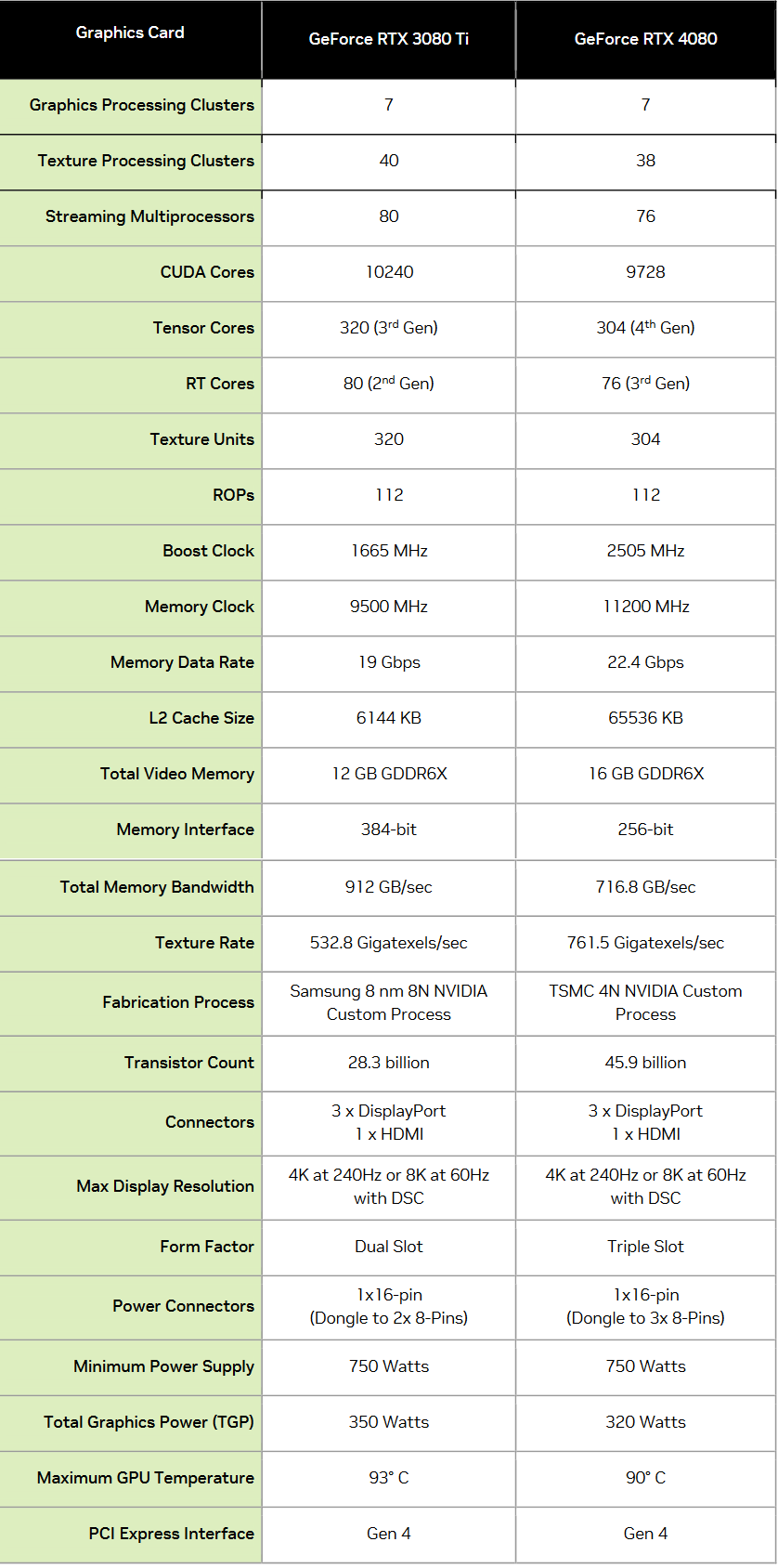
Like the RTX 4090, the 4080 is a massive triple slot card powered by the infamous 16-pin power connector. However, it has a considerably lower TGP of 320W, making it substantially more efficient than any other 4K capable card on the market. Its price tag puts it in direct competition with the GeForce RTX 3080 Ti, which we’ll look at in this post.
Test Bench
- CPU: AMD Ryzen 9 5900X @ 5GHz
- Cooler: NZXT X73
- Motherboard: MSI MAG X570E Tomahawk
- Memory: Thermaltake 8GB x2 @ 4,600MT/s CL19
- PSU: Corsair HX1000i
NVIDIA RTX 4080 16GB vs RTX 3080 Ti Ultrawide Gaming Benchmarks
The GeForce RTX 4090 is approximately 20% faster than the RTX 4080, both with and without DLSS. One of the primary advantages of DLSS 3 can be seen in “Plague Tage: Requiem”. With DLSS 2, both the Lovelace GPUs run into a CPU bottleneck which DLSS 3 alleviates, allowing the 4090 to regain its lead. Compared to the RTX 3080 Ti, we’re looking at a moderate ~40% lead.
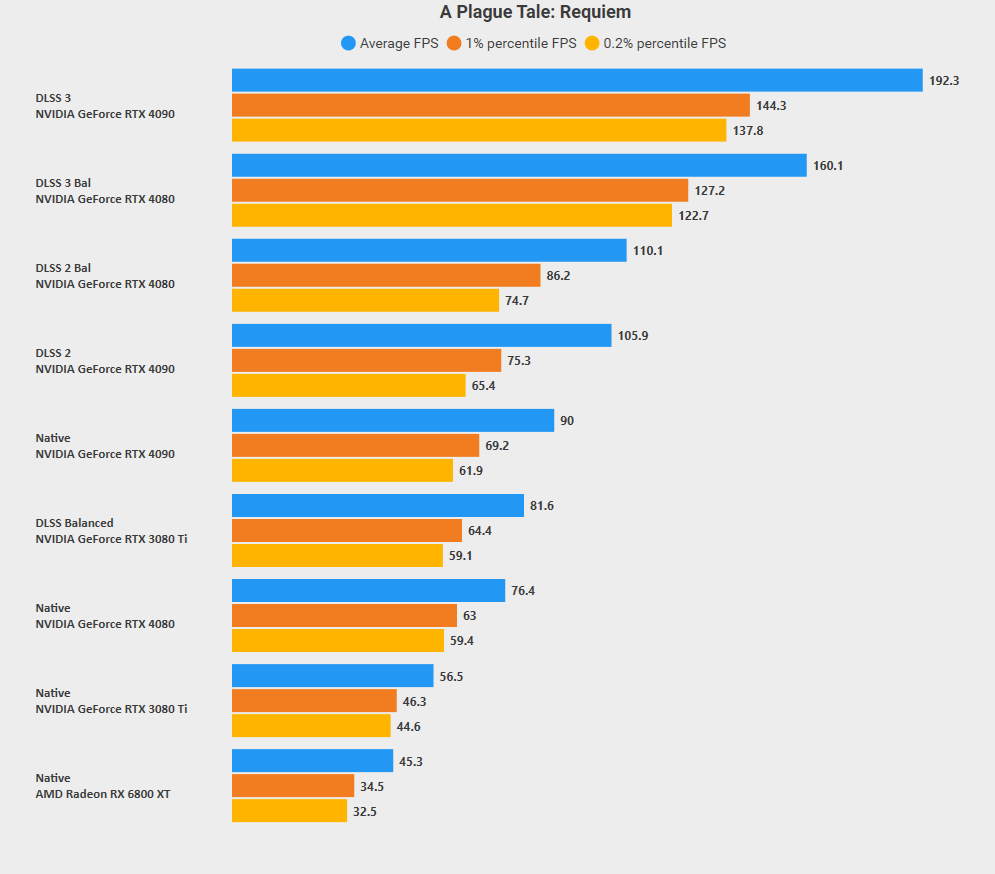
Cyberpunk 2077 exhibits the same behavior. The Ryzen 9 5900X lacks the oomph to run this game over 60 Hz, crippling the RTX 4090 and limiting the gains conferred by DLSS 2. DLSS 3 removes this bottleneck, netting 161 FPS on average (2K RT Ultra), 20% faster than the RTX 4080’s 136.
The GeForce RTX 4080 is 35% faster than the RTX 3080 Ti in Cyberpunk 2077 with DLSS 2 enabled.
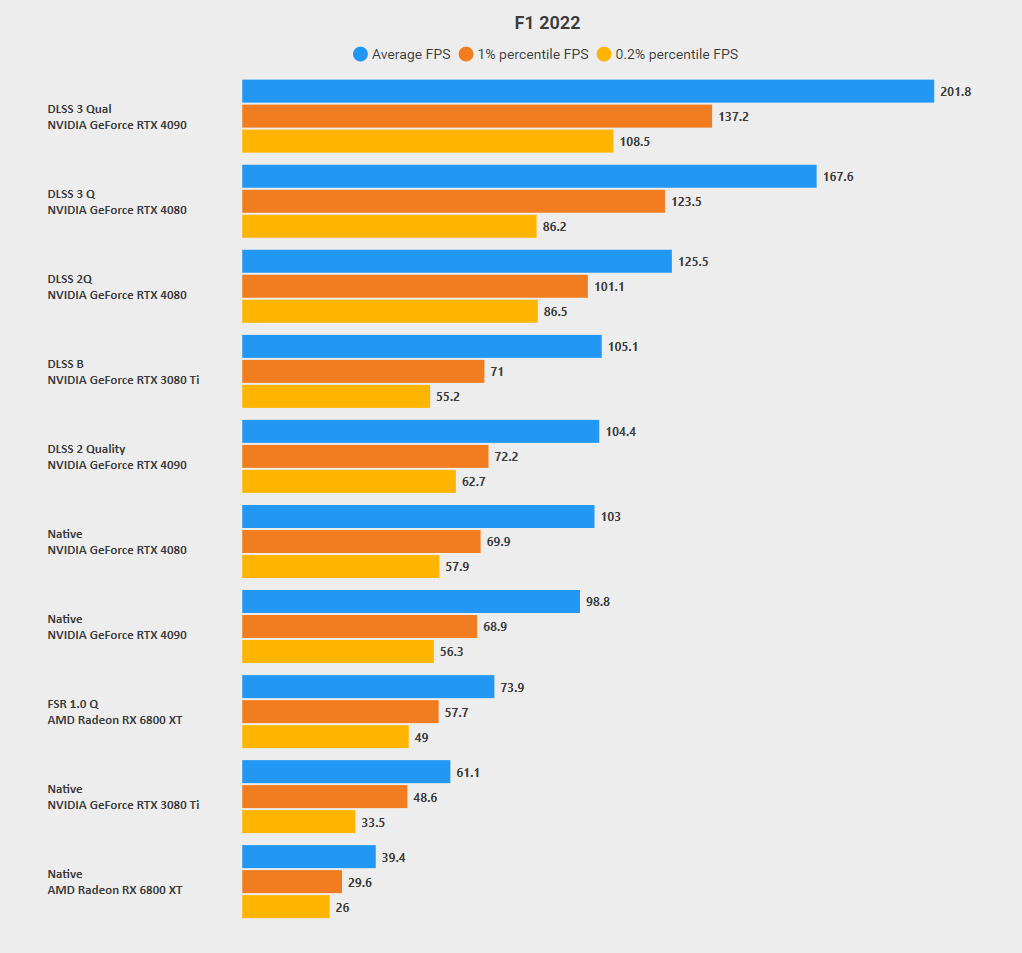
it’s the same story with F1 2022, except here, the RTX 4080 and 4090 are tied even at native 2K. DLSS 3 again propels the latter ahead of the former, albeit only by 20%. In this case, the RTX 4080 beats the RTX 3080 Ti by a healthy 60% at native.
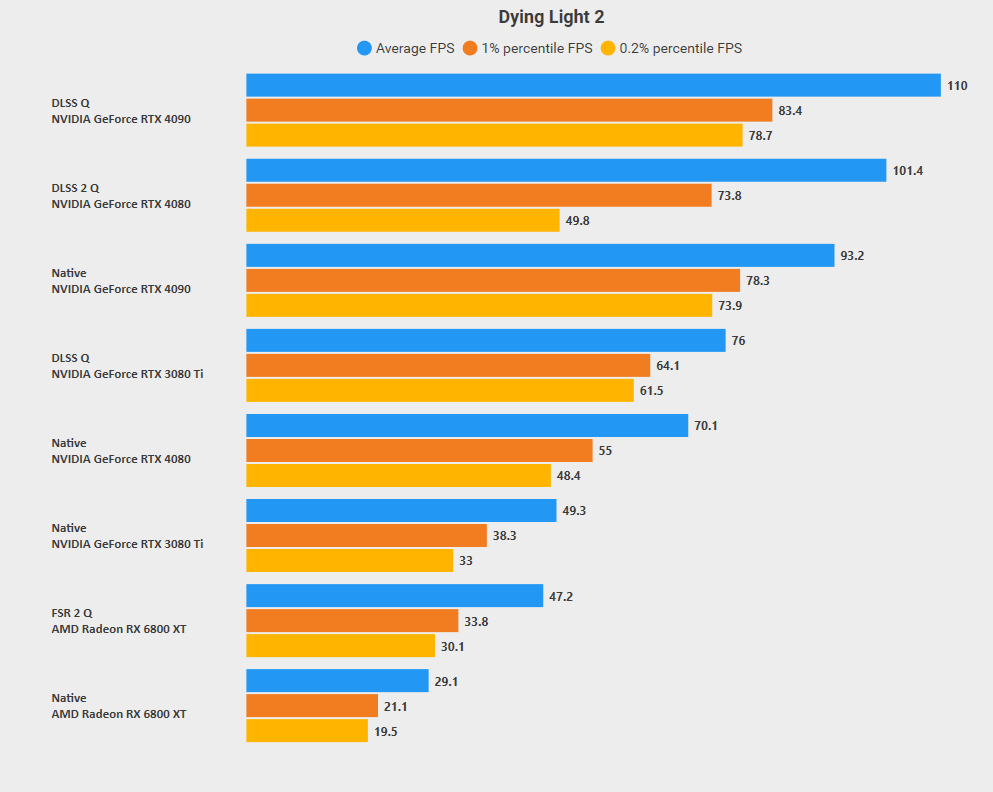
The lack of DLSS 3 support is strongly felt in Dying Light 2. In this case, the RTX 4090 leads the RTX 4080 by 30% at native 2K Ultra RT. Enabling DLSS almost erases the delta as the RTX 4080 and 4090 average 101 FPS and 110 FPS, respectively. Meanwhile, the RTX 3080 Ti is 25% slower than the 4080 in this title.
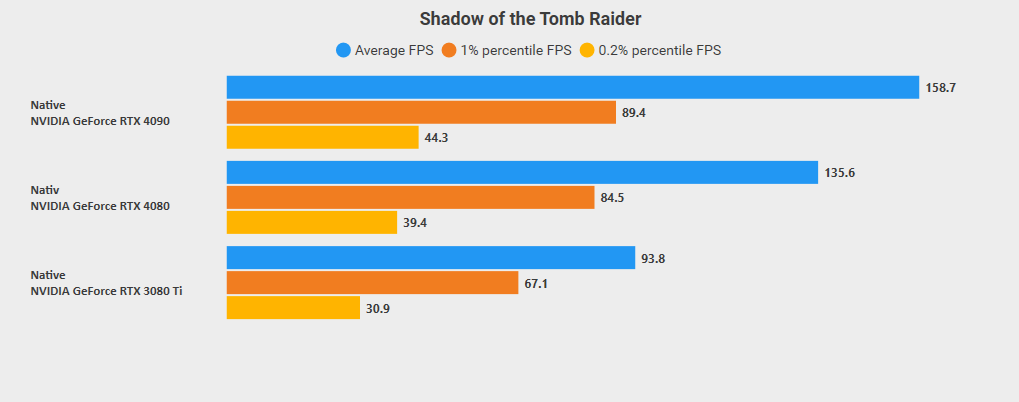
Shadow of the Tomb Raider and Metro Exodus are two of the earliest implementations of ray tracing on PC. The RTX 4080 is roughly 20% slower than the 4090 in both titles. It leads the RTX 3080 Ti by an appreciable 45% at native ultrawide.
In Ghostwire: Tokyo, the RTX 4080 and 4090 performed almost identically with a delta of just 4 FPS. The RTX 3080 Ti trails its similarly priced successor by a mere 10%.
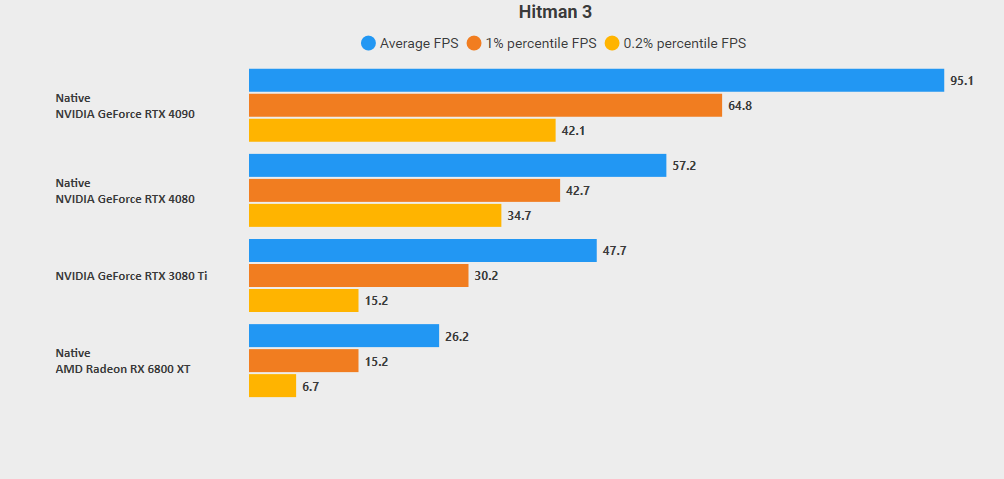
Hitman 3 is the only game where the RTX 4090 can stretch its legs without DLSS frame generation. With ray-tracing maxed out at native 2K, it beats the RTX 4080 by 65%. The RTX 3080 Ti is 15% slower than the 4080, while the Radeon RX 6800 XT is too slow to be considered relevant.
Far Cry 6 is either a heavily CPU-bottlenecked or poorly optimized game. It’s the only example where all four GPUs perform within 5 FPS of one another.
NVIDIA RTX 4080 Overclocking and Power Efficiency
Our sample turned out to be quite the overclocker. We increased the core clock by 200MHz, and the memory clock by a whopping 1,000MHz. This increased the former to nearly 3GHz (from 2.75GHz) and 25.4Gbps (from 22.4Gbps). Unfortunately, these bumps didn’t translate into real-world performance gains:
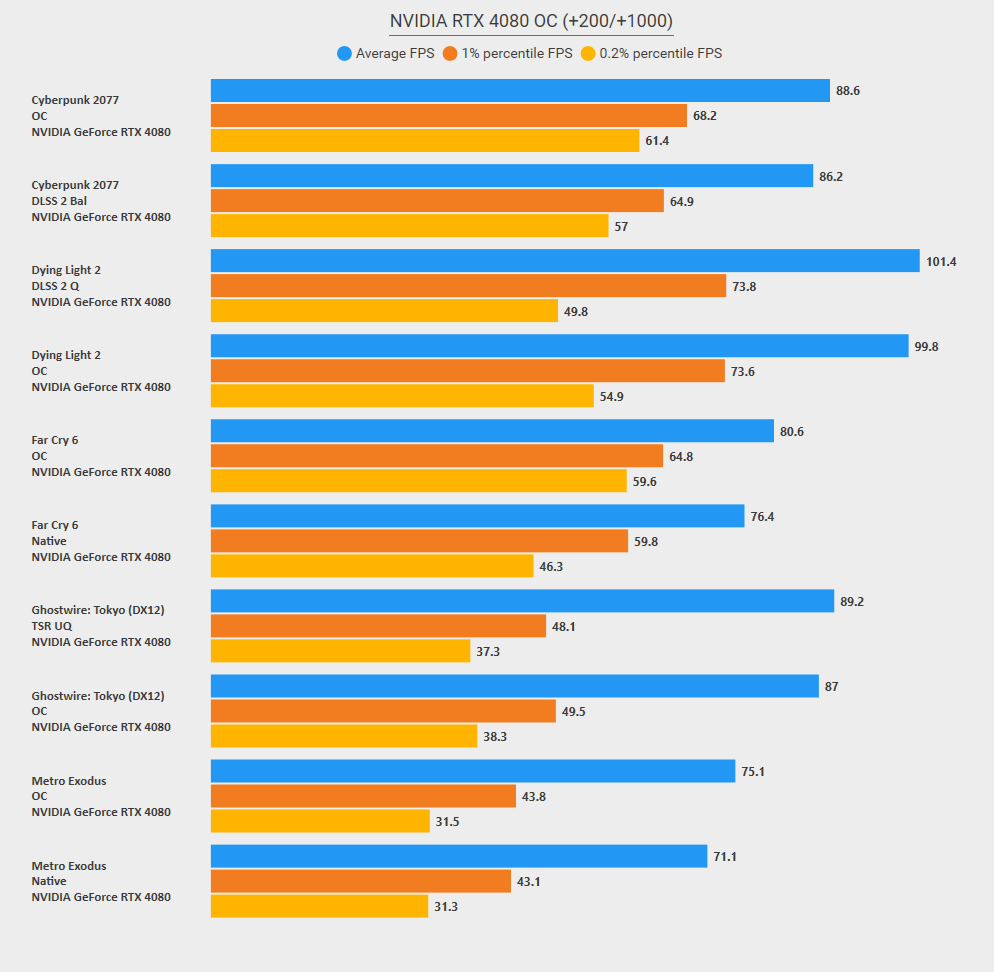
The GeForce RTX 4080 stays within its TGP limit, averaging slightly less than 300W in even the most taxing gaming workloads. Its peak draw was 312W at stock. Overclocking increased the average by 21W and the max power consumption to 343W. This is 36W and 45W less than the RTX 3080 Ti and RTX 4090, respectively.

We reduced the TGP of the RTX 4080 to 275W (-50W) and retested some of the titles. In half of the games, we see almost no loss in performance. Further check-in revealed that the card was drawing an average of just 258W in Metro Exodus, 54W less than stock despite performing roughly the same.
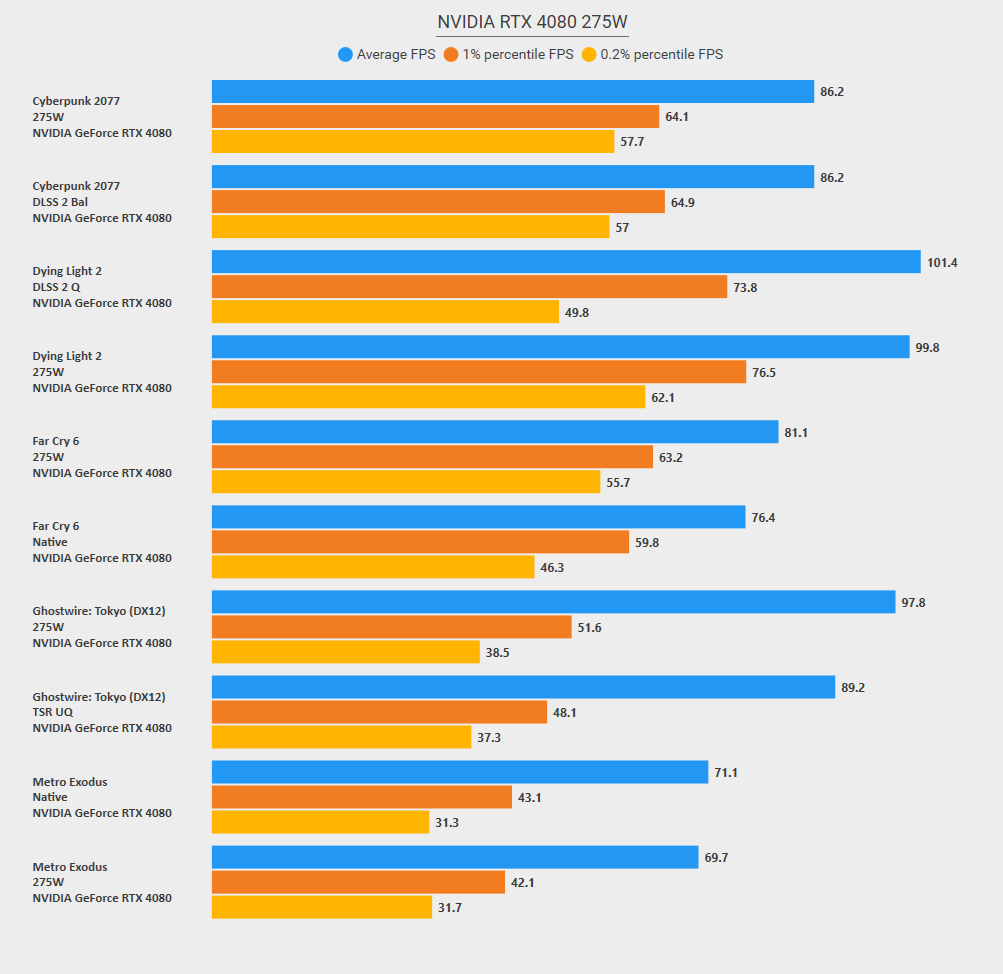
Thermals

Like the RTX 4090 Founders Edition, the RTX 4080 runs surprisingly cool and quiet. At stock, it maintains an average core temperature of 55 degrees and a peak of 58. Overclocking pushes the average to 59 and the maximum to 62 degrees Celsius. On the other hand, the RTX 3080 Ti pulsates at 73 degrees on average, approaching the 80-degree mark under heavy load.
Conclusion: Patience or the RTX 3080 Ti
The GeForce RTX 4080 16GB checks all the right boxes: Lofty performance, remarkable efficiency, next-gen ray-tracing capabilities, and of course, DLSS 3. The only point of concern is the price. It is the first x80 graphics card to cost over a grand, making the $799 RTX 2080 look reasonable. NVIDIA is trying to carve out a section of the market for the higher-end 40 series GPUs while keeping the RTX 3080, 3080 Ti, and 3090 in the equation. Considering that the RTX 3080 Ti costs around $800-900 at the time of writing, the 30-40% performance deficit is more than justified. Ultimately, it’s either the RTX 3080 Ti or waiting for the RTX 4080 to get cheaper.
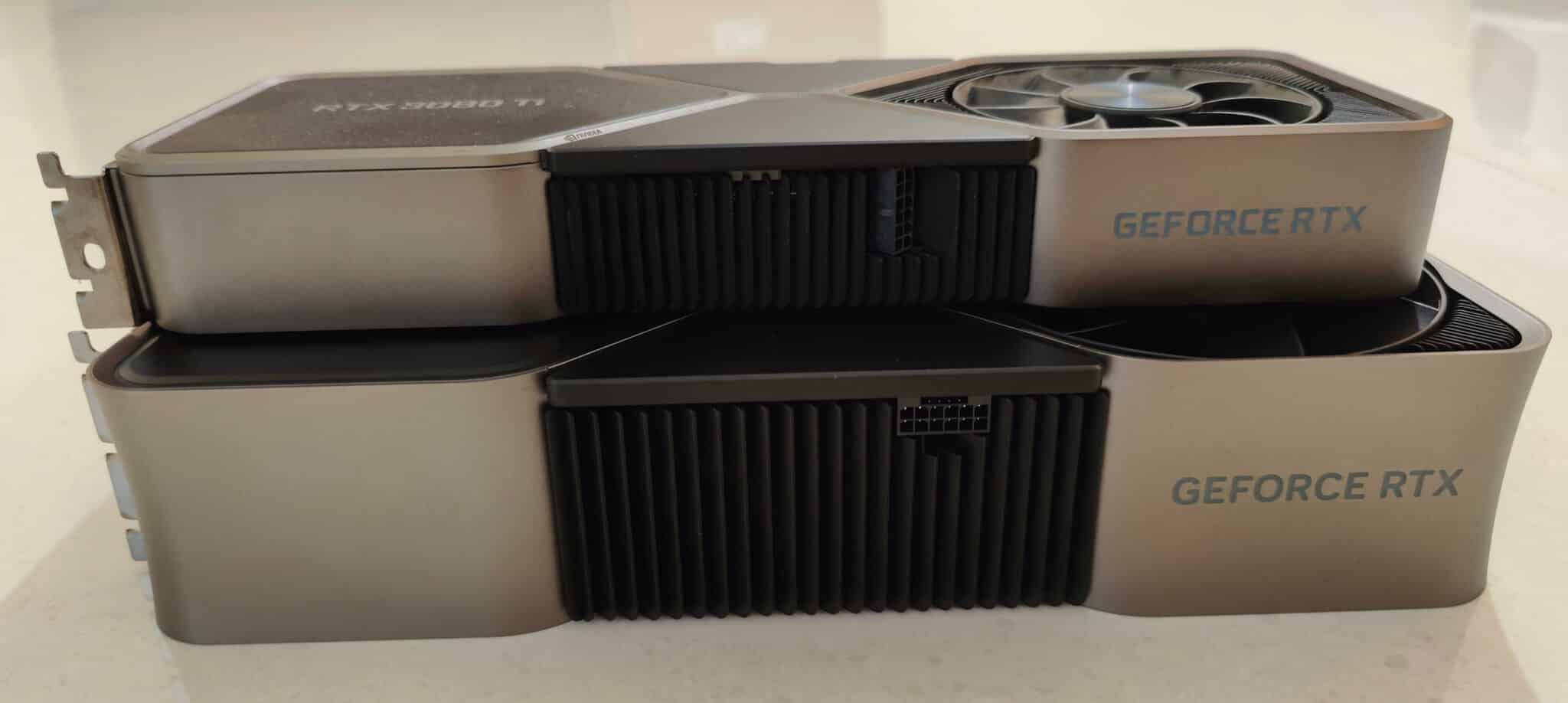
 AMD Radeon RX 7900 GRE Review: Sapphire Pulse
AMD Radeon RX 7900 GRE Review: Sapphire Pulse Intel Graphics Driver Boosts Performance by up to 48% on Meteor Lake Processors
Intel Graphics Driver Boosts Performance by up to 48% on Meteor Lake Processors AMD Radeon RX 8800 XT Release Date and Specs
AMD Radeon RX 8800 XT Release Date and Specs Intel 2nd Gen Arc Battlemage Graphics Cards Allegedly Launching in November 2024
Intel 2nd Gen Arc Battlemage Graphics Cards Allegedly Launching in November 2024